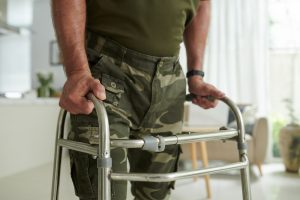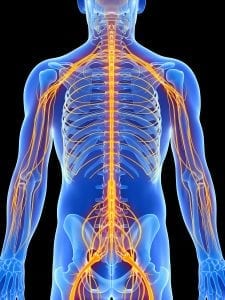On March 20, 2025, we will stop accepting new Military Disability Made Easy subscriptions. For more information about how this change may impact your subscription, click here
The VA’s Final Rule on Joint Replacements
- Published:
- Last Updated: October 4, 2022
 On Thursday, July 16, 2015, the VA published a final rule regarding how to apply the ratings for joint replacements.
On Thursday, July 16, 2015, the VA published a final rule regarding how to apply the ratings for joint replacements. Previously, the VASRD codes 5051 – 5056 gave the rating requirements for prosthetic implants used for joint replacements, but did not specify whether the ratings applied only to total joint replacements or included partial joint replacements.
Under these codes, a 100% rating is given for 1 year following the date of surgery for joint replacements in order to cover the long period of recovery usually required by such significant and invasive surgery.
The VA’s standard practice when applying these codes has always been to include just total joint replacements, not partial joint replacements, but without the language specifying this in the VASRD, questions soon arose. The United States Court of Appeals for Veterans Claims finally determined in Hudgens v. Gibson that the VA’s practice was justified.
With the many medical advances that have occurred, partial joint replacements are now far less invasive and require far less recovery time than a total joint replacement. Thus, they do not need the 1-year 100% rating necessary for total joint replacements.
To solidify this decision, the VA changed the VASRD to include the following note:
“The term ‘prosthetic replacement’ in diagnostic codes 5051 through 5056 means a total replacement of the named joint. However, in DC 5054, ‘prosthetic replacement’ means a total replacement of the head of the femur or of the acetabulum.”
As mentioned in the note, the only exception to this rule is for code 5054, joint replacement of the hip, which specifies that either the total replacement of the head of the femur orthe total replacement of the acetabulum qualifies. The hip is the only exception to this rule. For every other joint, the full joint must be replaced.
This change was finalized and made affective July 16, 2015.
All partial joint replacements are rated on any symptoms that they cause, like limited motion of the joint.
Recent Posts
TDRL vs. PDRL—Which is better for disability benefits?
February 13, 2025
Leukemias and Multiple Myelomas NOW on the Presumptive List
January 9, 2025
Two MORE Conditions added to the Burn Pit Presumptive List
January 3, 2025
The 2025 VA Disability Rates are here!
December 2, 2024
About Us










3 Comments
I think it is fair
I had total knee replacement of my left at the VA and my claim was denied. Is it my understanding that I should have been 100% for at least 1 yr after my surgery?
What is the reason the VA gave for the denial? Service-connected total knee replacements (code 5055) are rated 100% for the first 5 months after discharge from the hospital following the procedure. It should then be re-evaluated and rated on the remaining symptoms.